Our choppiest night navigation yet took us to Puerto Ayora, the largest of the three towns in the islands. The first time I came here, the population was less than 1000. The last census apparently showed 21,000 permanent residents, and the differences between 1990 and 2014 are deep and broad. This sleepy little town is no longer sleepy. About the third time I came to the Galapagos my guide took me to a disco that had just opened. Now there are at least three night clubs with dancing. There’s public WiFi available at the pier. The roads are (mostly) paved, and a new electrical system is being put in from town to the highlands.
Once again we set out early, arriving at the Charles Darwin Station before anyone else, which allowed us to linger at the various exhibits in ways that are impossible once the big ships—there’s a National Geographic ship in port—start spewing passengers. Oddly, one of the big male tortoises was trying to climb onto another one, which was amusing to watch. I mean, once you get on top, then what are you going to do?
We also managed to see a few tortoise fights. With the saddleback tortoises, the fight is simple: stick your neck all the way out and see how high you can get your head. The one who’s looking down at the other wins. The fights rarely—but sometimes—go further, which would be the biting stage. But the tortoises generally only take one look at their opponent’s neck and declare a victor.

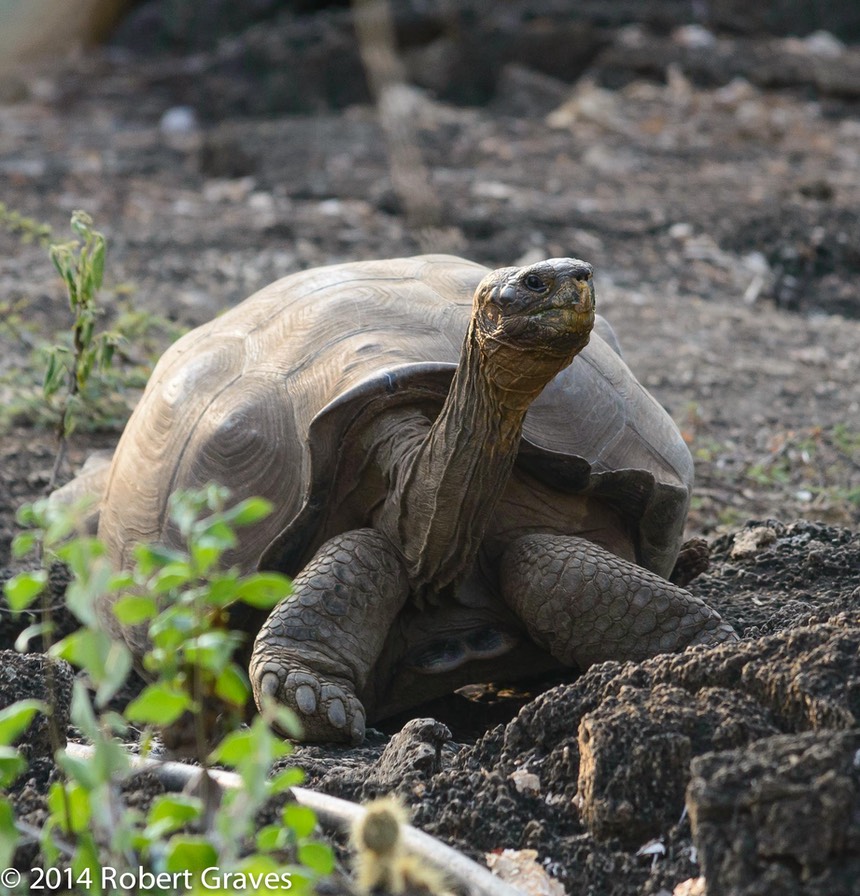

The Darwin Station has now bred and reintroduced over 2000 giant tortoises on a number of islands, which is quite a breeding success. But it’s not just tortoises they work with, they also are working with land iguanas in a similar fashion. If you go back to Darwin’s days here, you find that he wrote about land iguanas on islands that today don’t have populations of them.
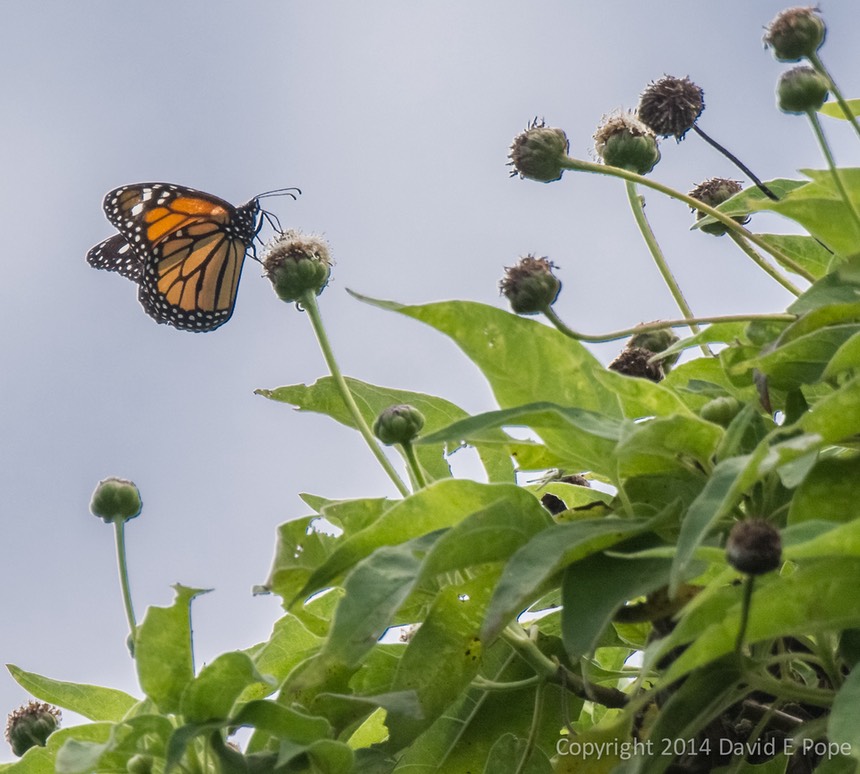
From the station we met a bus to take us up to the highlands. Our first two stops were geological: the Twins, a set of large sinkholes, and a lava tube. It’s easy to forget that these islands are relatively young, and that they don’t really have nearby land to have wind blow dirt onto them. While there’s plenty of vegetation around, it’s a thin layer on top of volcanic deposits. Mangroves are often the first plant life settler in such situations, and we see them everywhere on the islands.
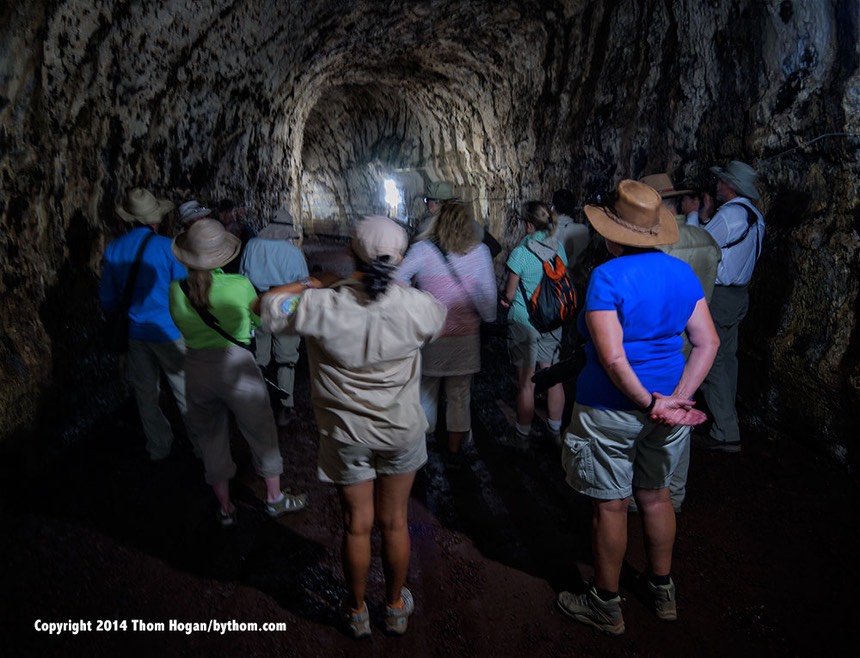
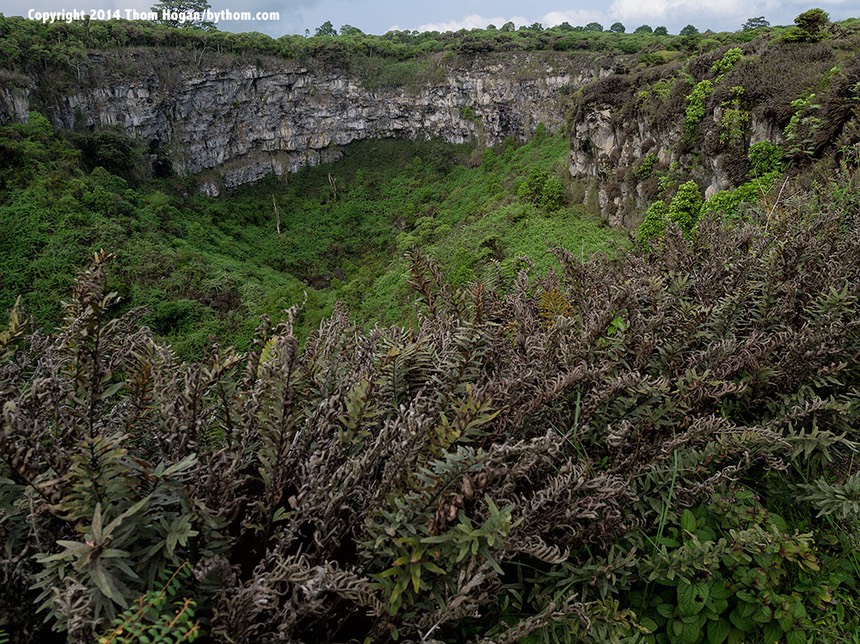
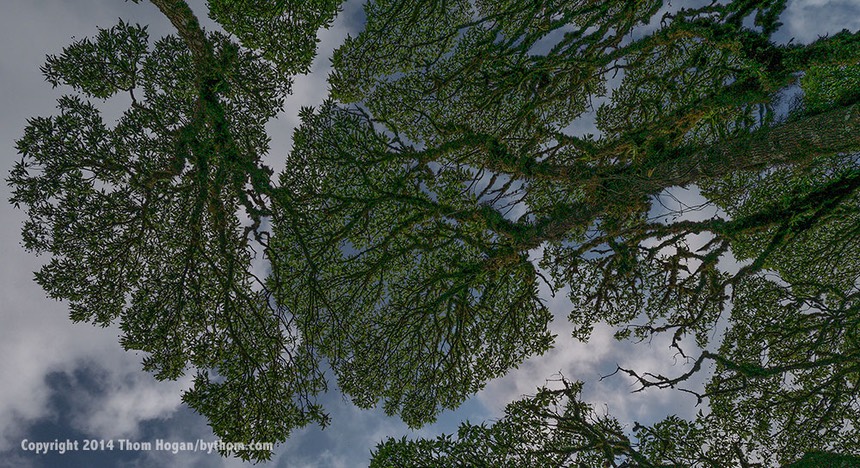
Our main destination in the highlands was one of the farms. Yes, there is private land on some of these islands, the largest amount here on Santa Cruz. However, the giant tortoises are protected even if they cross over into private land. A long time ago some of the farmers saw ways to encourage tortoises to remain in parts of their acreage (hint: build ponds and mud holes) and cater to the tourism business. These operations are one place where you can see the animals close up, in quantity, and in something akin to the territory you’d have seen them in had you arrived before Darwin (one difference: introduced grasses and plants that wouldn’t have been in these areas, though the tortoises still would have been).
Just look for a mud hole and you’re likely to find a tortoise. If not (and even if you do, just be patient):
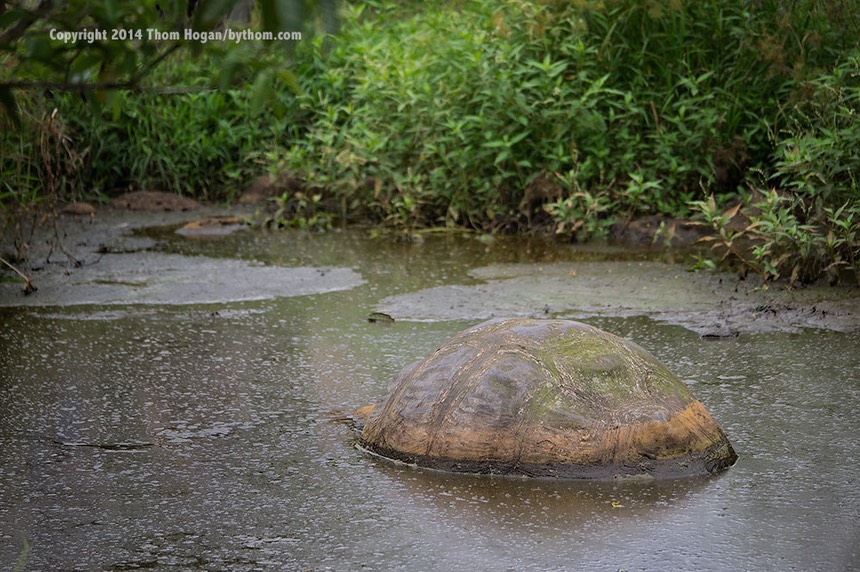
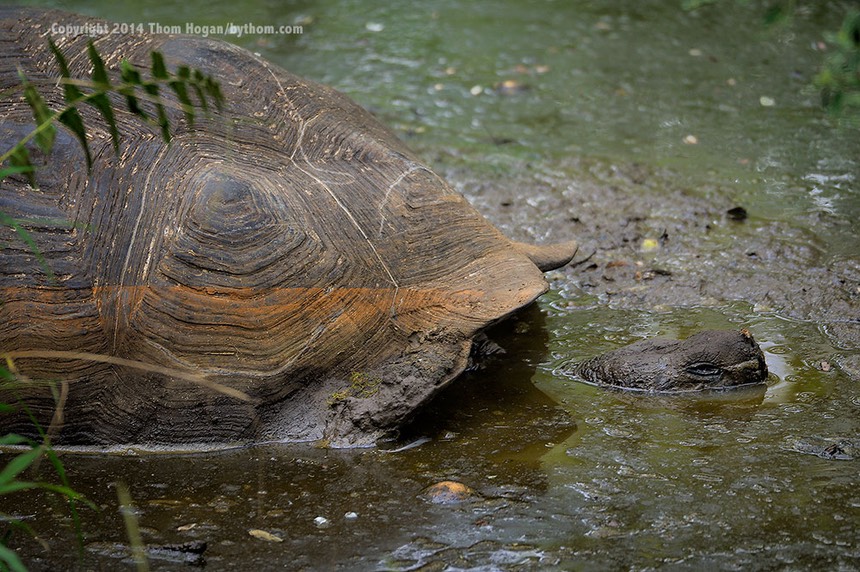

Yep, they get quite muddy (check out the left side of the above tortoise’s shell after he came out of the pond).

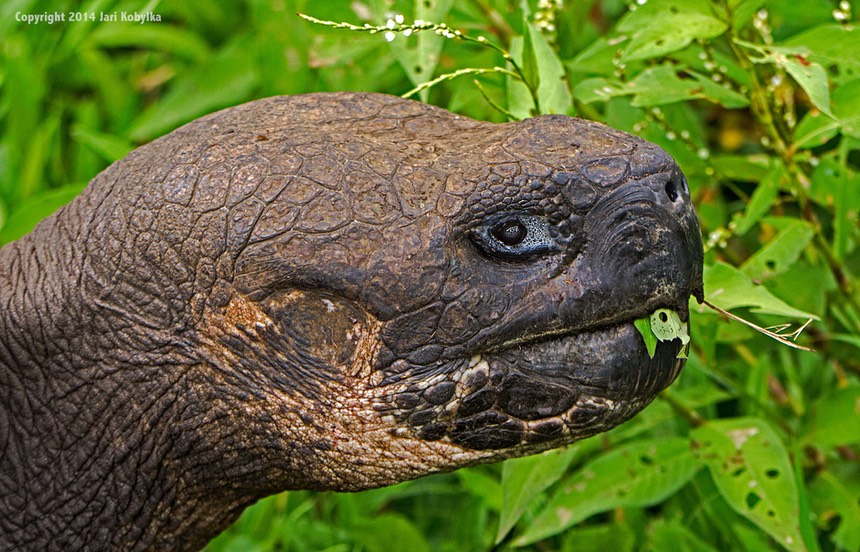
It’s always interesting watching people’s reactions to seeing the tortoises on Santa Cruz (at the research station and in the highlands). If your boat hasn’t made many stops yet and this is the first place you see land iguanas and tortoises, the excitement will be palpable, and the group tends to spend lots of time lingering on the animals. On the other hand, if you’ve been cruising for most of a week as we have, and have seen these animals in their natural habitat, the most interesting thing about a day like today is that you can find someplace to sell you ice cream ;~).
We came back to the boat for lunch and a nap, then in the late afternoon those that wanted to headed into town to souvenir shop. Today and tomorrow are our “lower key” days in the middle of the trip, where our schedule is a little more relaxed and we’re around a few more people from other boats. Come Monday, we’ll be back at places where we’ll be doing three and four activities a day and concentrating on getting better photographs. This weekend, though, is a little bit more like vacation time than serious photography time.
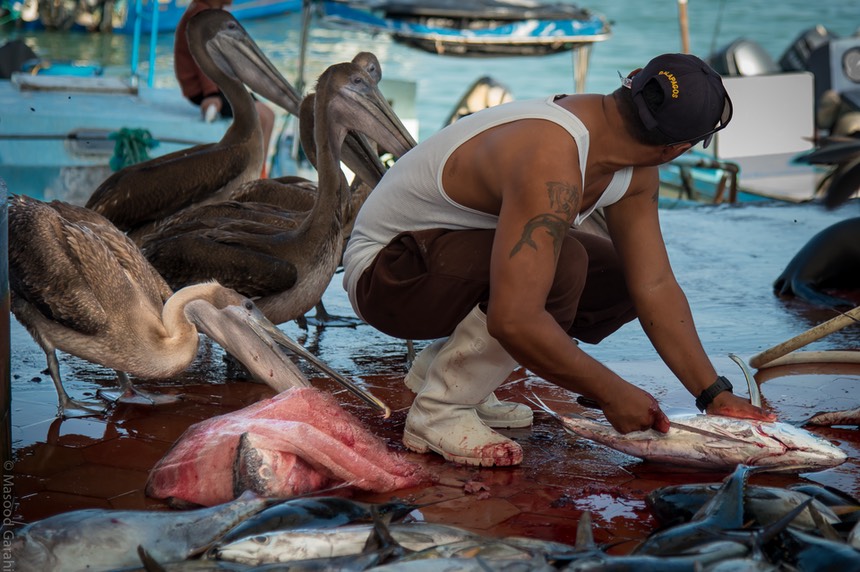
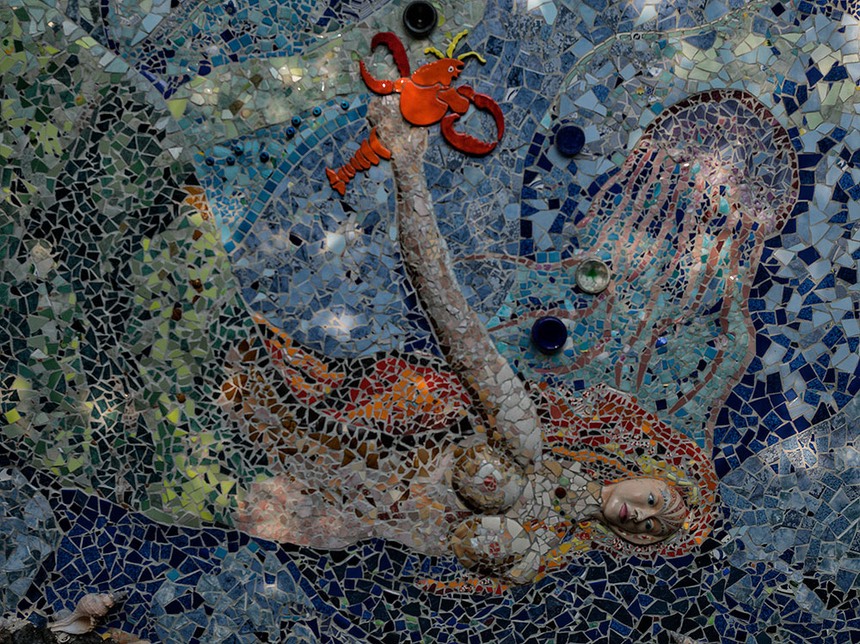
Part of a local artist’s elaborate wall tile mosaic, which extends dozens of yards. Just look for the tile arch on the way to or from the Darwin Station from town, head through it.
Landings: Both the Darwin Station area and the main town have piers that are dry landings. At Darwin Station, sometimes you have a bit of rough water and marine iguanas or sea lions on the dock to deal with. At the main town dock, the main problem is human congestion. Puerto Ayora actually now has designated docks for various boats/groups, and a complex water taxi system, as well.
Significant New Sightings: People! Lots of them. Cars, buses, places that sell ice cream. At Darwin Station you can usually see sub-species that you can’t see on most tours, as it has breeding populations for both tortoises and iguanas for islands and sites that currently don’t have them available to tourism.
